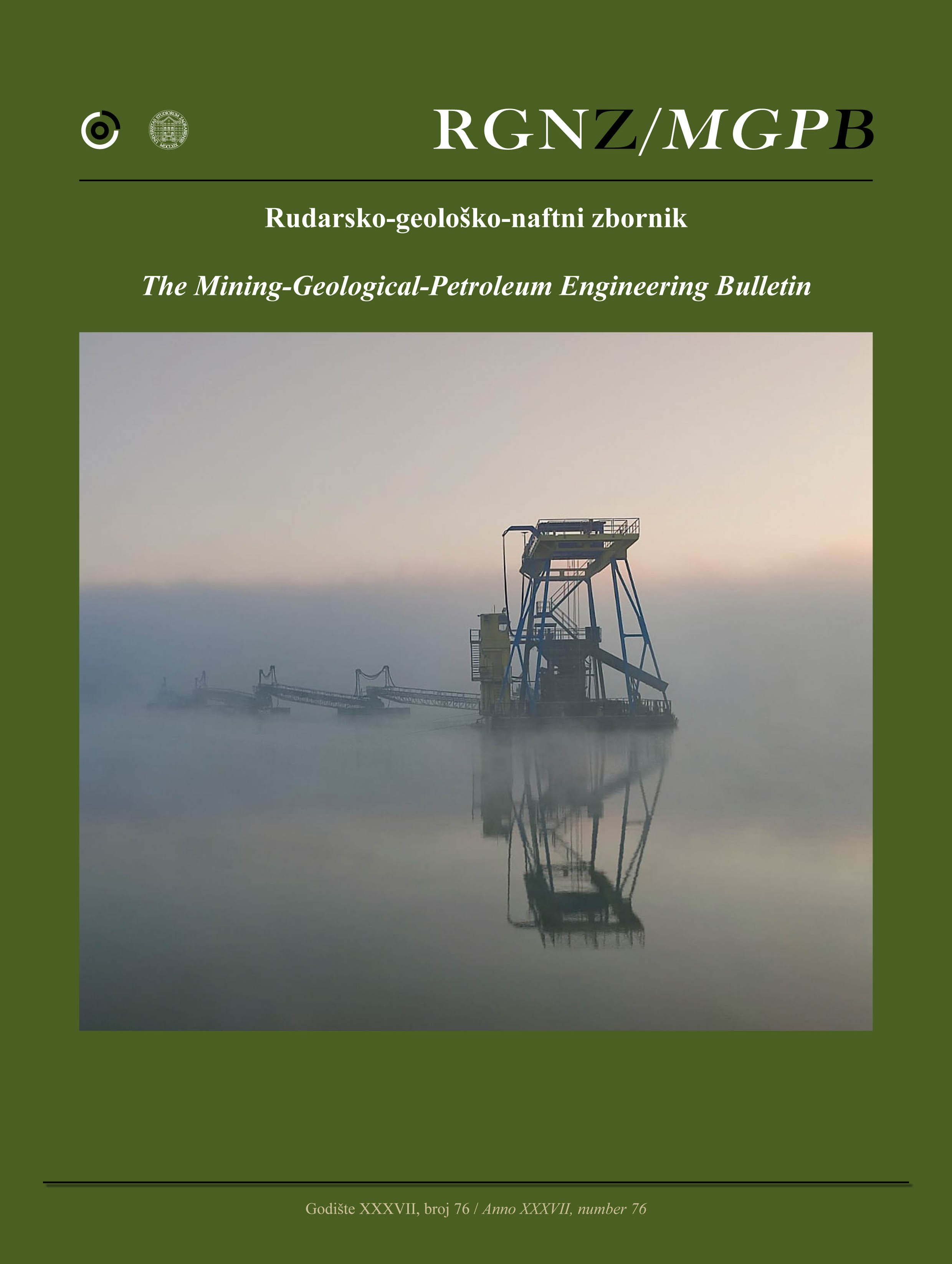Magnetic and Geochemical Studies of Iron sand Deposits around Tambora Volcano in Sumbawa, Indonesia: A proxy for search high quality iron sand
DOI:
https://doi.org/10.17794/rgn.2025.5.2Keywords:
iron sand, magnetic minerals, grain size, magnetic susceptibility, geochemistry, TamboraAbstract
Tambora Volcano is known as a volcano that had a catastrophic eruption in 1815, with an enormous amount of material released, including pyroclastic flows and fall deposits. From these volcanic products, erosion and transportation processes acted towards the coastline and formed iron sand, which contains economically valuable minerals such as magnetite. Iron sand is one of the important elements/components for the production of steel and titanium, but its use is still limited. In Indonesia, iron sand has only been mined and used as a mixture in the production of cement and building materials because of its low iron content (45-48%). Therefore, it is important to know the characteristics and content of iron sand to maximise the results of iron sand mining. The characteristics of iron sand deposits from Mount Tambora are still unclear and have never been studied. Therefore, we conducted a study to identify the geochemical characteristics and magnetic properties of iron sand around Tambora Volcano to determine the concentration of economic elements from different volcanic products. This study uses magnetic susceptibility measurements, X-Ray Diffraction (XRD), X-Ray Fluorescence (XRF), and Inductively Coupled Plasma - Optical Emission Spectrometry (ICP-OES) measurements. Sampling was carried out at three locations in the area, namely Nanga Miro, Baringin Jaya, and Hodo. The Nanga Miro and Baringin Jaya areas are the lava flow deposit zones of the 1815 eruption and lava flows from previous eruptions, while the Hodo area is just the pyroclastic flow zone of the 1815 eruption. The results showed that the distribution of sand grain sizes in Baringin Jaya and Nanga Miro that are from the lava flow deposit zones are dominantly medium sized (MS) and fine sized (FS). Meanwhile, in Hodo, which is from the pyroclastic flow deposit zone, it is dominantly coarse sized (CS) and medium sized (MS). Areas from the lava flow zones have high susceptibility values, high Fe concentrations, and magnetic mineral content of magnetite and haematite. In addition, the REE elements (Ce, Gd, and Pr) have a high concentration in iron sand from the lava flow area and have a good Pearson correlation value. The combination of grain size distribution and magnetic and geochemical properties has shown differences in the characteristics of iron sand in the Tambora Volcano area.
Downloads
Published
Issue
Section
License
Copyright (c) 2025 Putu Billy Suryanata, Adella Ulyandana Jayatri, Satria Bijaksana, Silvia Jannatul Fajar, Uivienin Harlianti

This work is licensed under a Creative Commons Attribution 4.0 International License.
Creative Commons-BY
Authors who publish with this journal agree to the following terms:
In agreeing this form, you certify that:
- You read the ethical codex of the RGN zbornik available at journal web.
- You submitted work is your original work, and has not previously been published and does not include any form of plagiarism.
- You own copyright in the submitted work, and are therefore permitted to assign the licence to publish to RGN zbornik.
- Your submitted work contains no violation of any existing copyright or other third party right or any material of an obscene, libellous or otherwise unlawful nature.
- You have obtained permission for and acknowledged the source of any illustrations, diagrams or other material included in the work of which you are not the copyright owner.
- You have taken due care to ensure the accuracy of the work, and that, to the best of your knowledge, there are no false statements made within it.
- All co-authors of this submitted work are aware of, and in agreement with, the terms of this licence and that the submitted manuscript has been approved by these authors.
Publication licence
You retain copyright in your submitted work, according to journal license policy (CC-BY). By signing this form you agree that RGN zbornik may publish it under the publication licence. In summary the licence allows the following:
Anyone is free:
- To copy, distribute, display, and perform the work.
- To make derivative works.
Under the following conditions:
- The original author must always be given credit.
- The work may not be used for commercial purposes.
- If the work is altered, transformed, or built upon, the resulting work may only be distributed under a licence identical to this one.
Exceptions to the licence
In addition to publishing the work printed under the above licence, RGN zbornik will also enable the work to be visible online.
The journal editorial can change the licence rules anytime but it cannot retroactively restrict author(s) rights.


